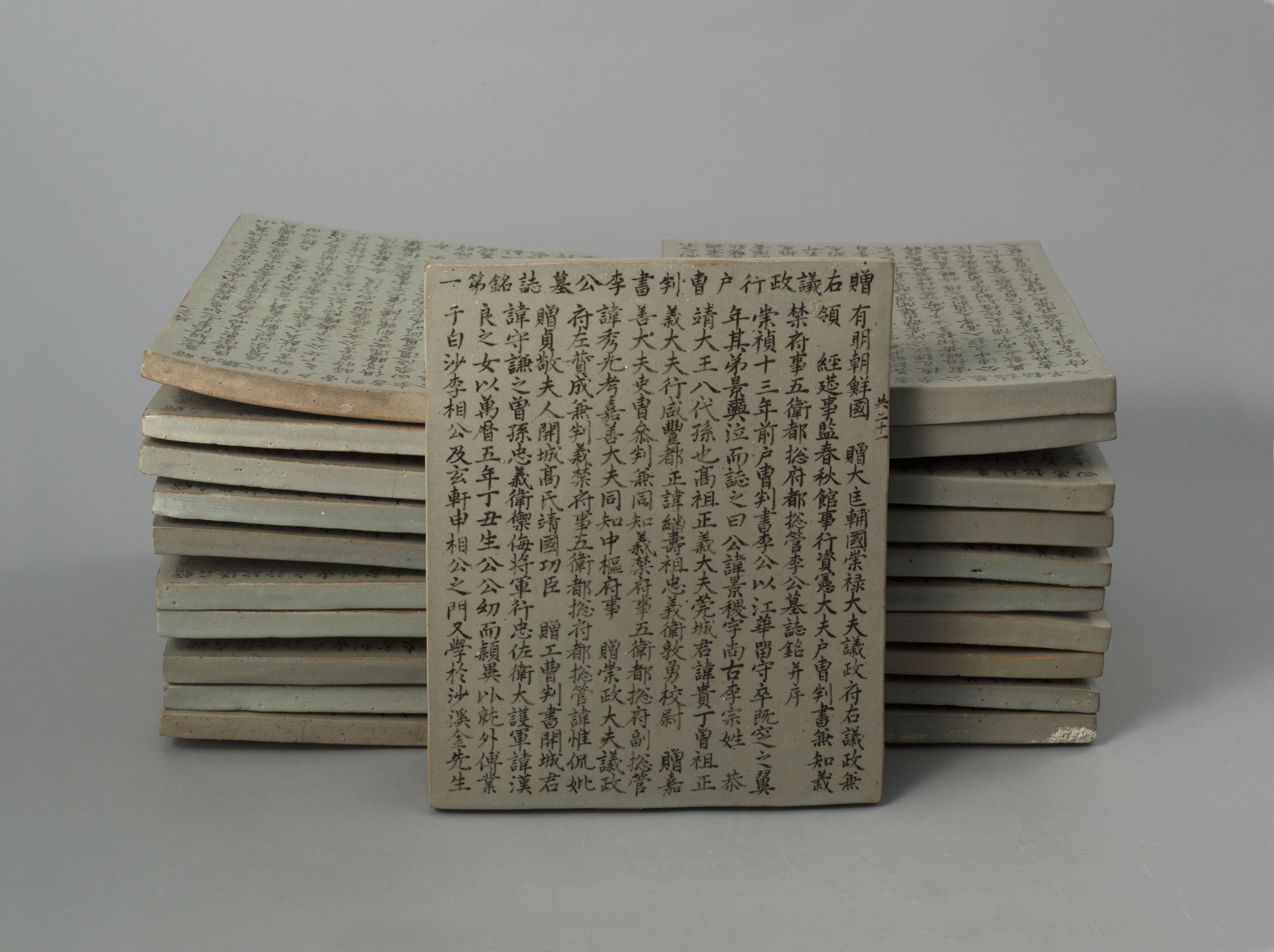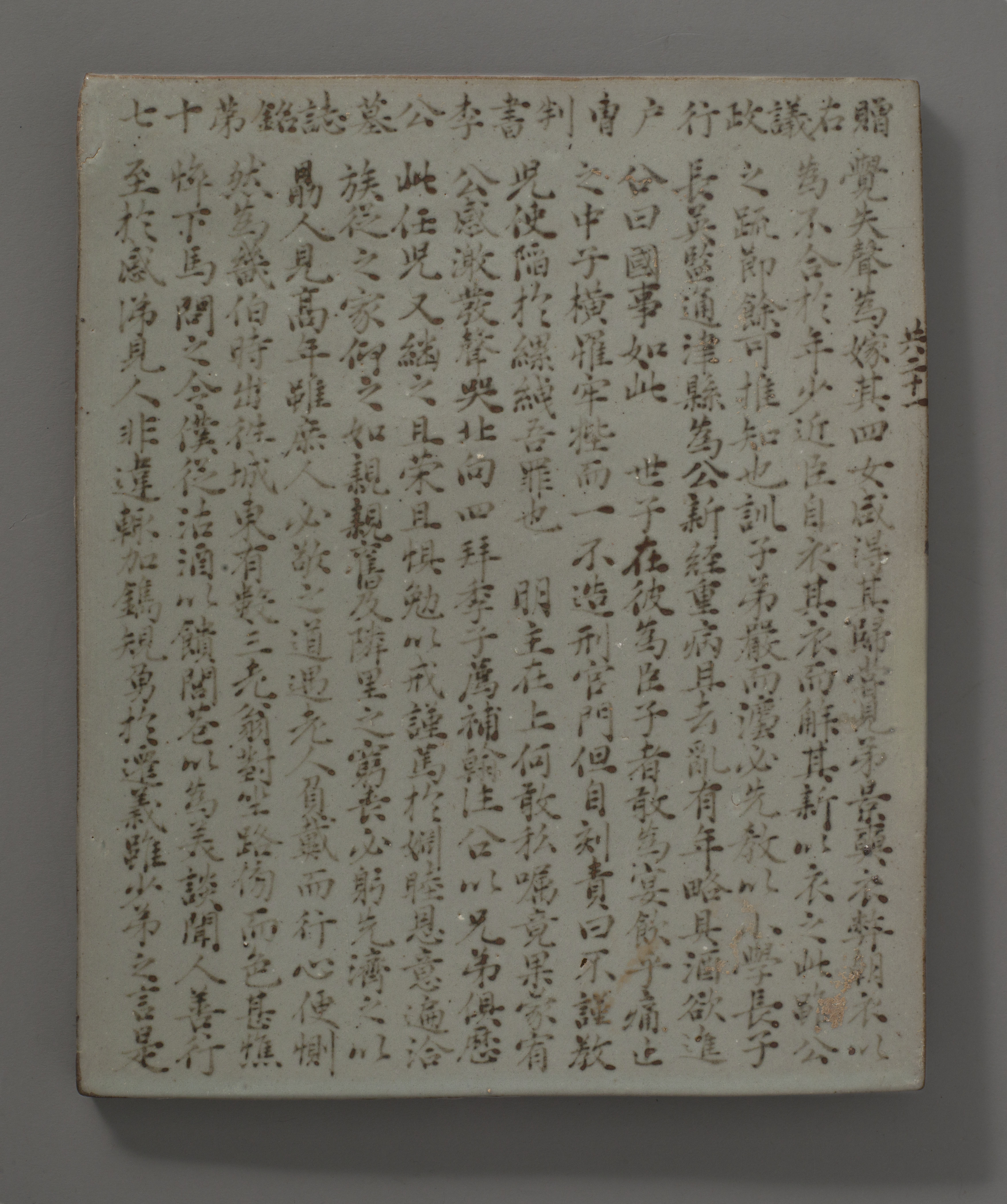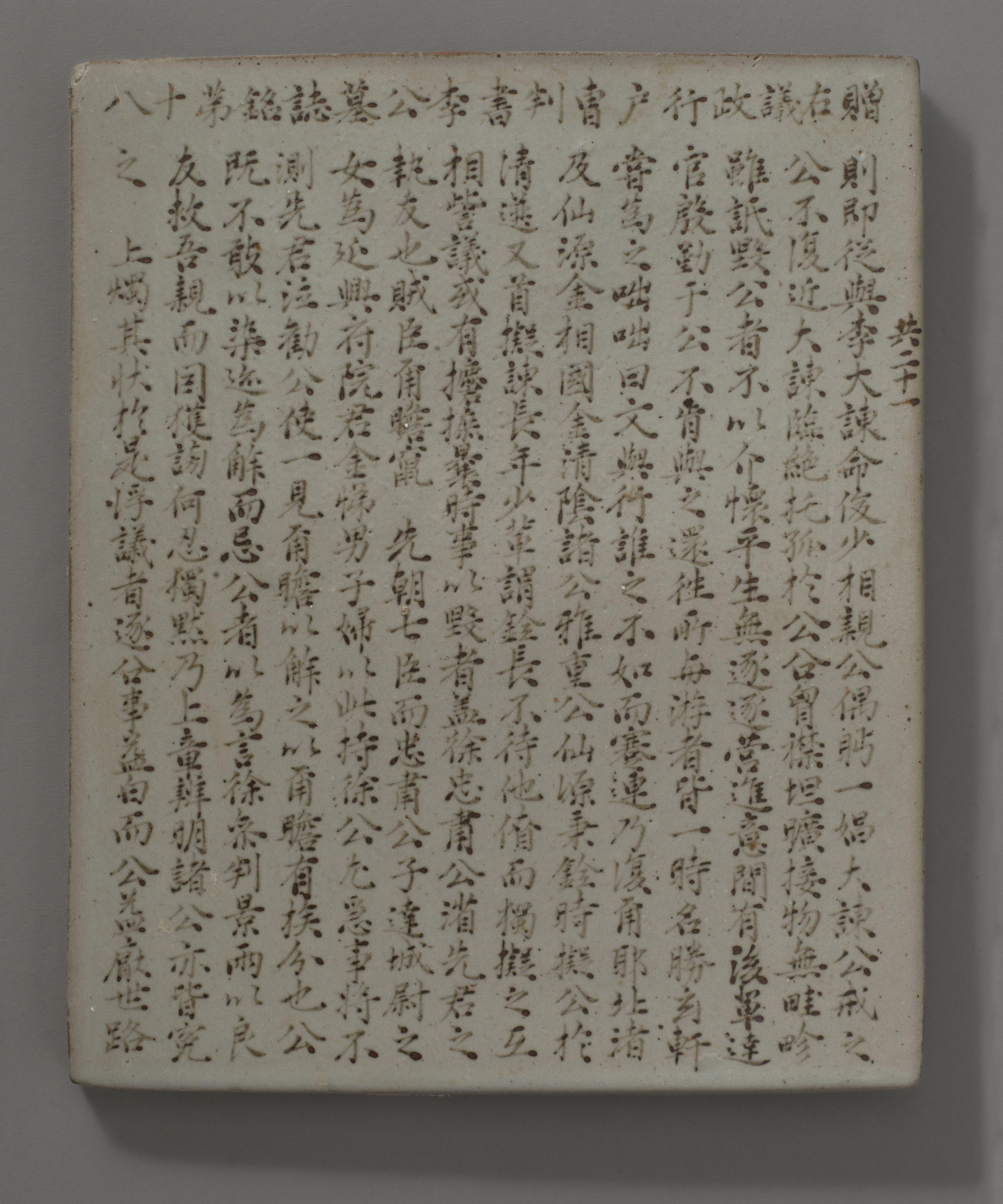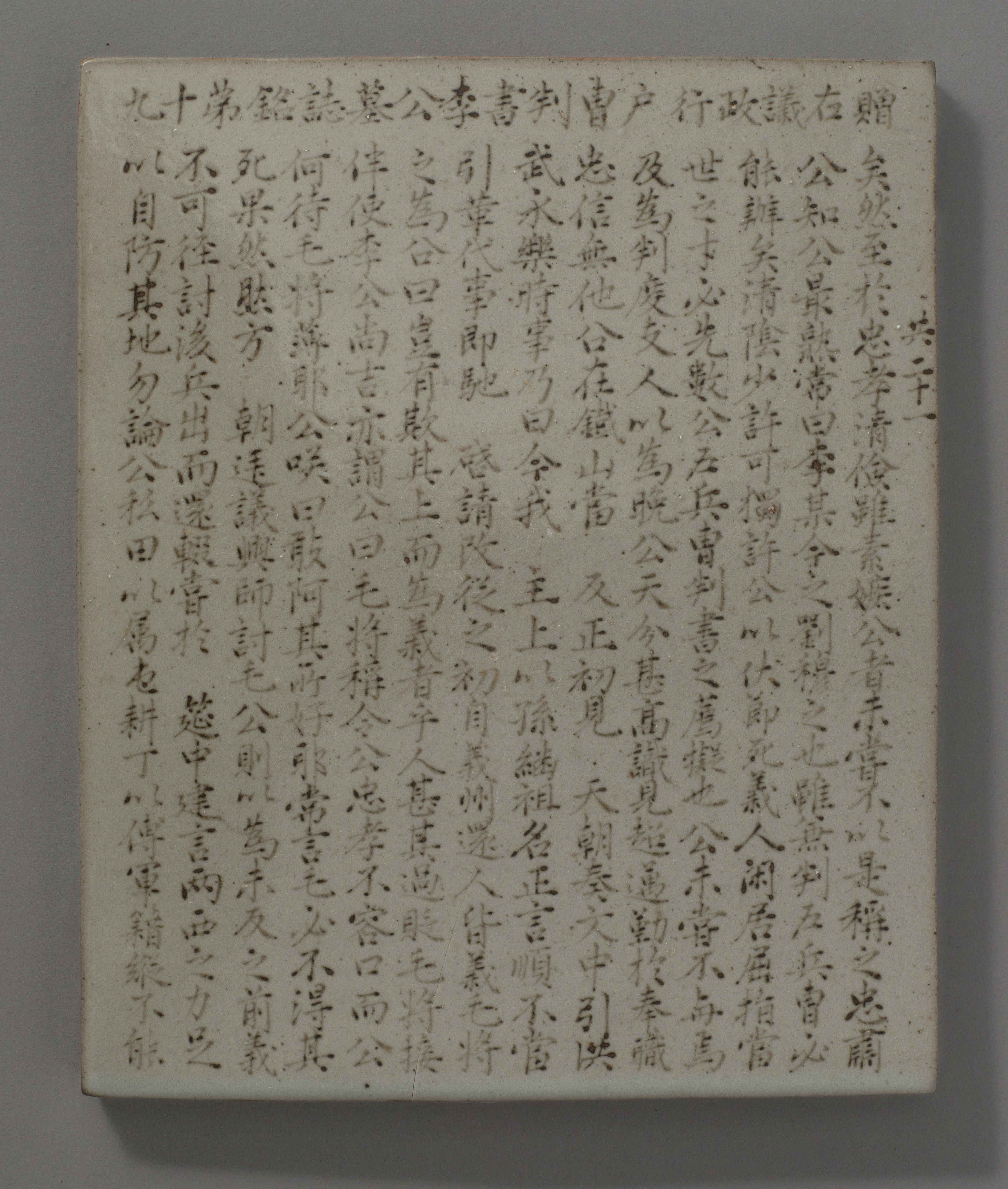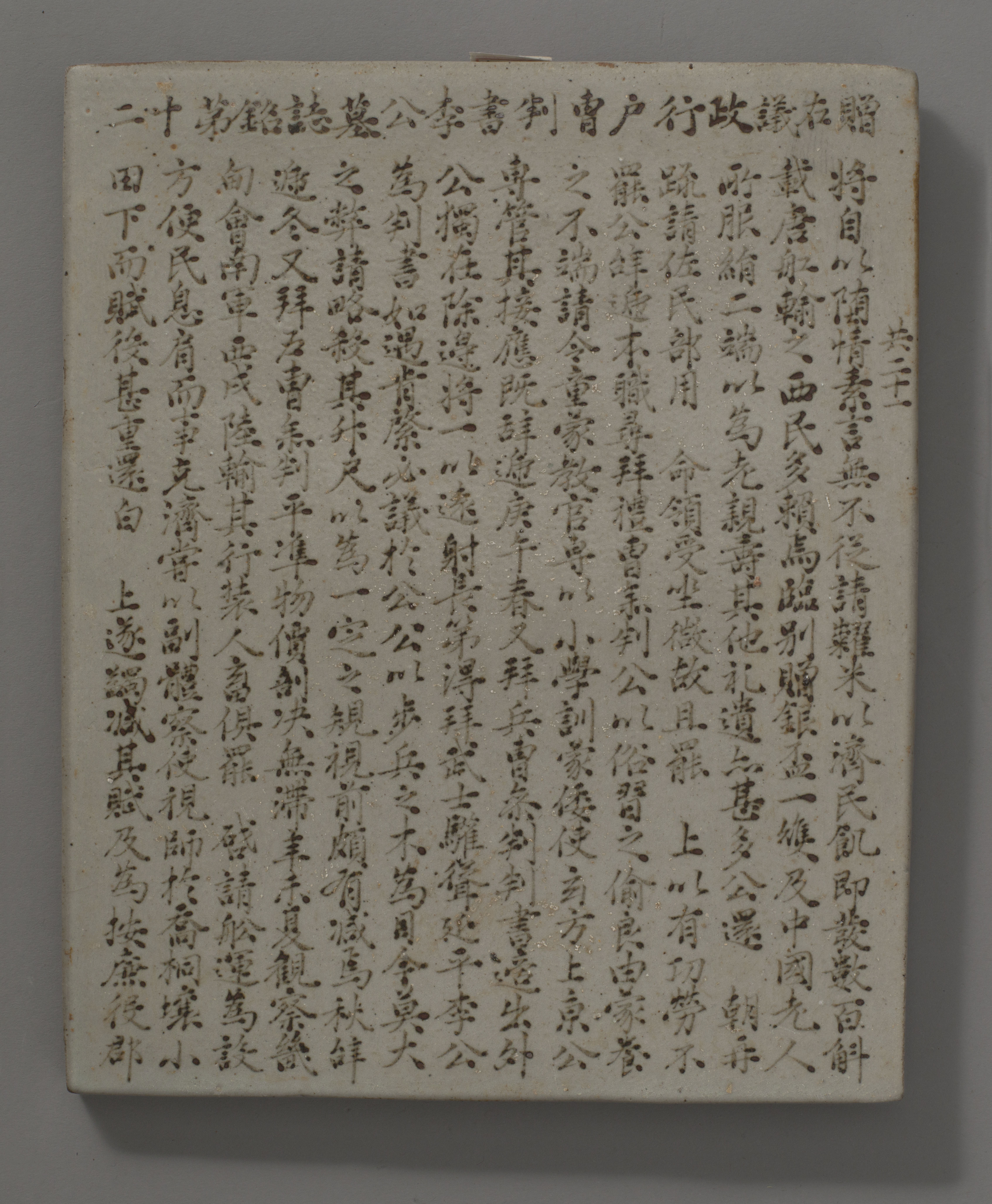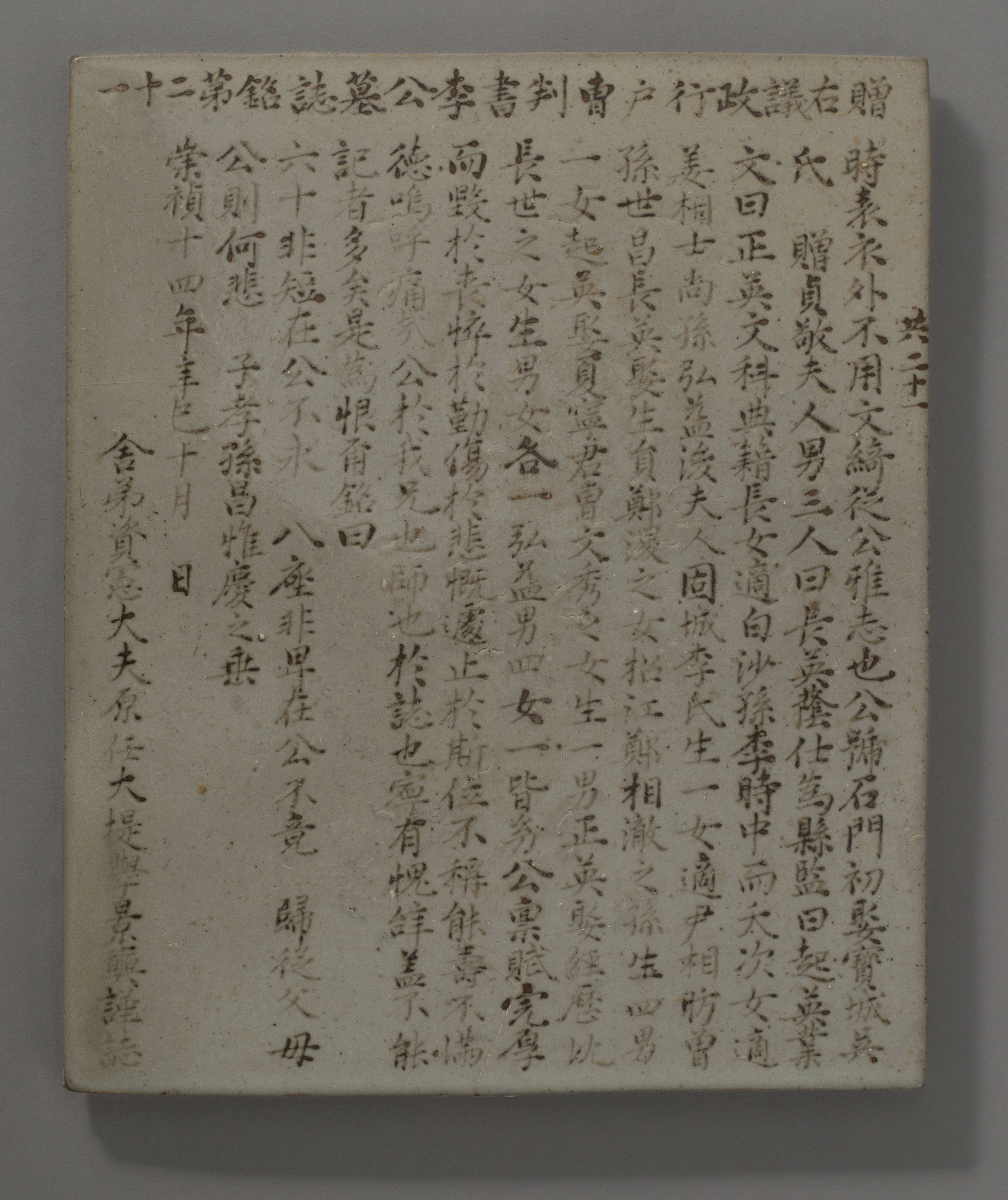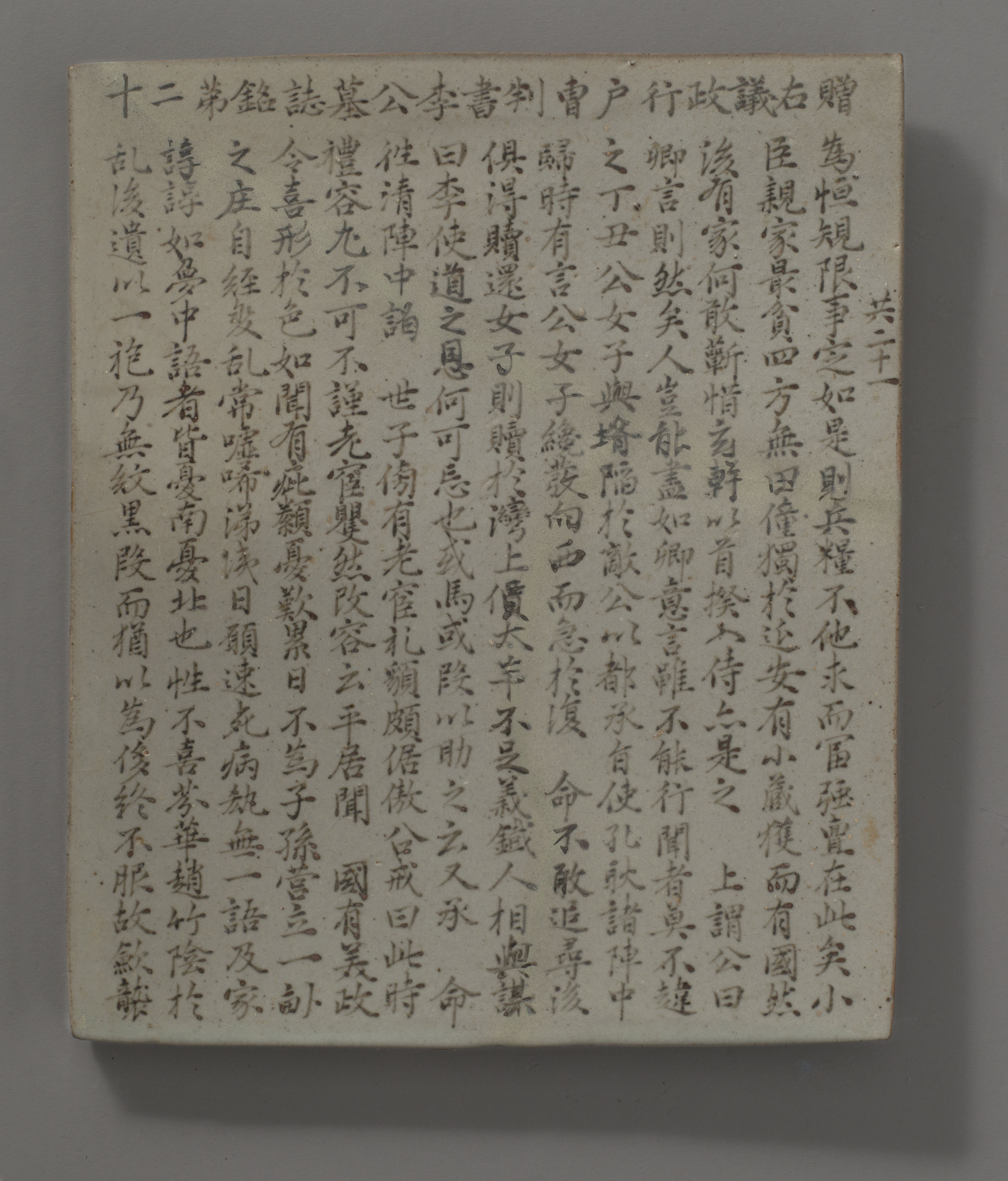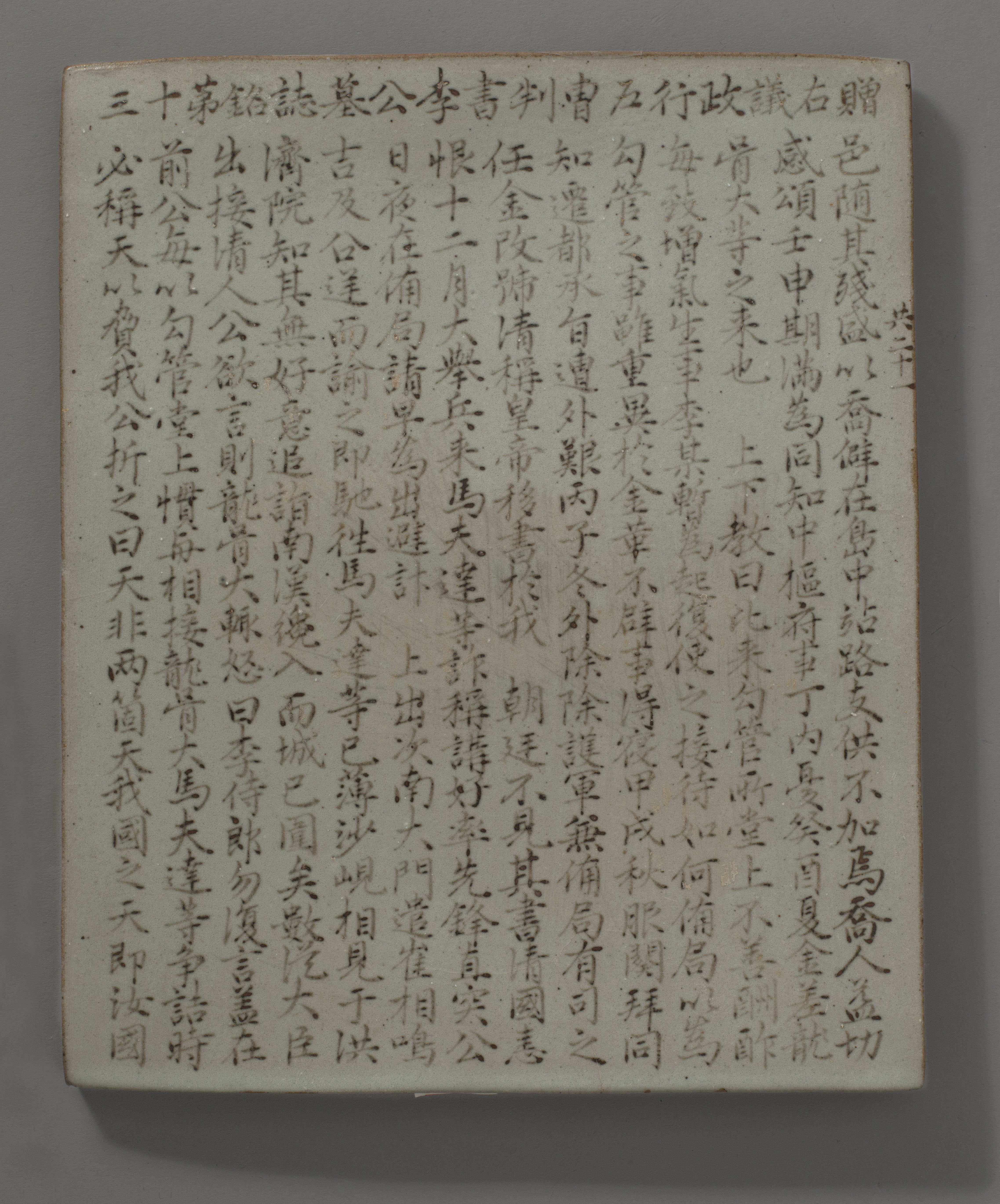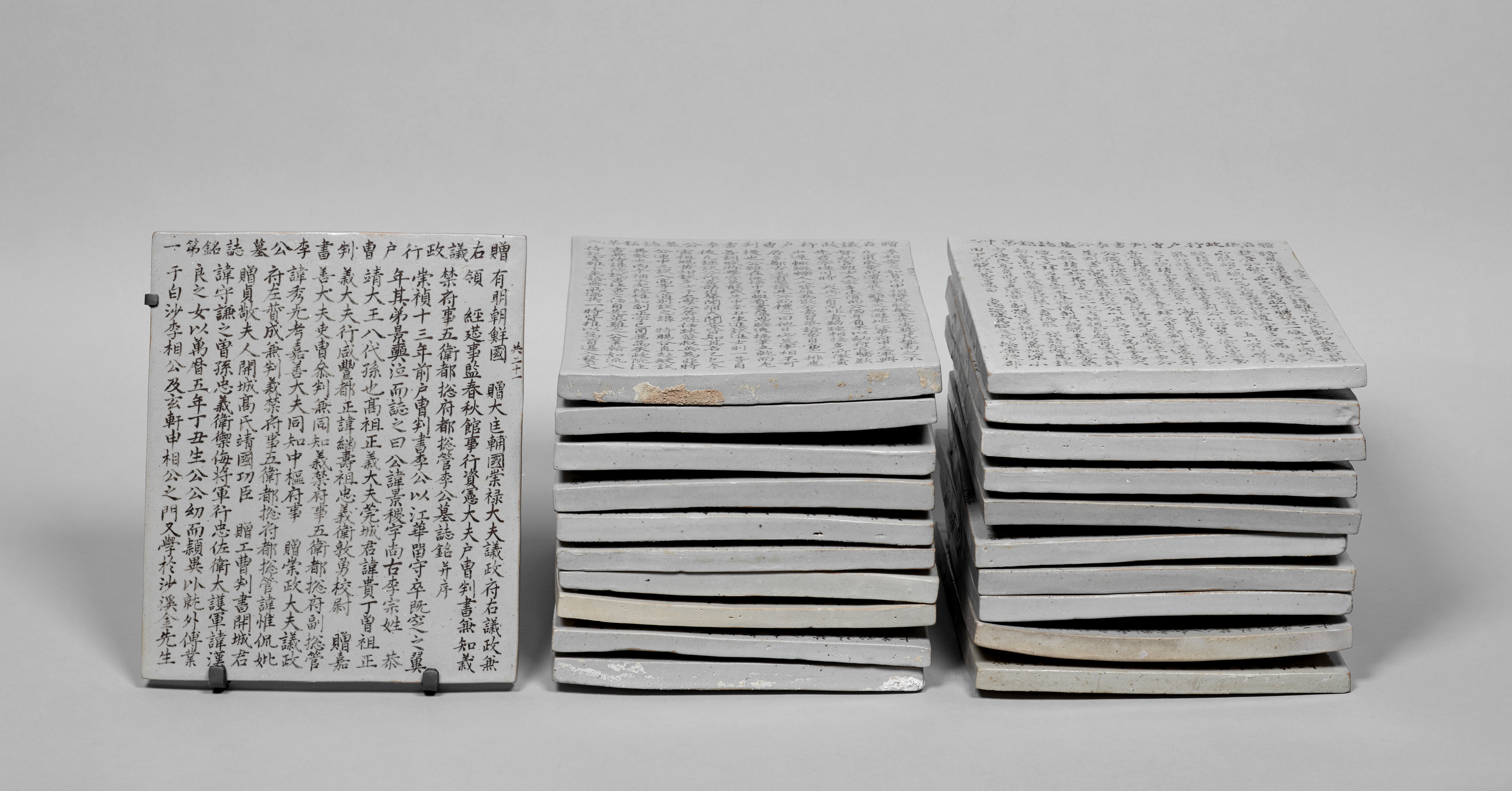
Epitaphe de Yi Kyŏngjik (1577-1640)
Porcelaine
Epitaphe
Don manuel : Carroll, Joseph P.; French American Cultural Exchange Foundation (FACE)
M.C. 2017-35
Epitaphs on porcelain tablets are among the emblematic objects of the scholarly culture in the Chosŏn period.
The Chosǒn period (1392-1910) saw the simultaneous rise of a lettered aristocracy, the yangban, and of a reformulated Neo-Confucianism, which justified the power of the yangban and structured the whole of Korean society. The painted porcelain epitaph tablets that were placed in the tombs of high-ranking dignitaries of the kingdom attest to this dual trend, which profoundly shaped the material culture of the Korean elite from the 15th century onwards.
On the one hand, the Chinese model of a society dominated by administrators who were recruited by examination conflicted with the importance attached to genealogy, access to the highest posts being, in practice, conditional on belonging to the class in possession of both the economic and cultural capital and that was engaged in factional politics. Hence the importance of lineage and having illustrious ancestors, and the custom of amending or staging a person’s genealogy, by posthumously obtaining or refusing titles of rank, for example. Porcelain epitaphs served both to formalise the heritage and idealised biography of a deceased person, who could then join the ranks of the clan’s prestigious ancestors.
On the other hand, these porcelain tablets reflect the yangban’s taste for an austere art reflecting the restraint advocated by Neo-Confucianism. The tablets are often compared with other ceramic ware of the Chosǒn period characterised by fewer colours and a rejection of technical perfection that would sterilise the beauty of these pieces by masking their irregularities.
The epitaph of Yi Kyǒngjik (1577-1640) is a typical example of this work, and also exceptional in the length of the text, which covers 21 porcelain tablets, and in the use of iron brown underglaze rather than cobalt blue.
